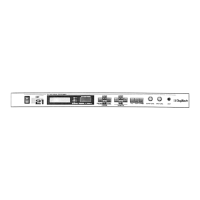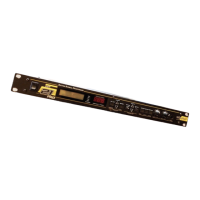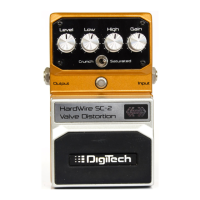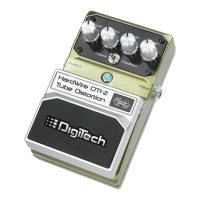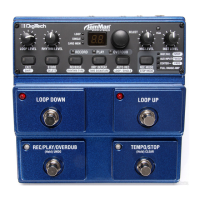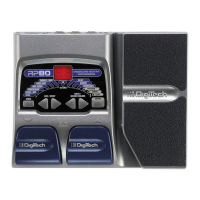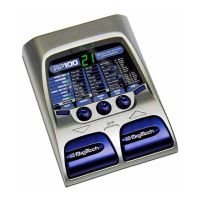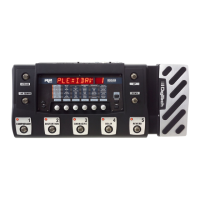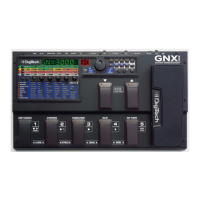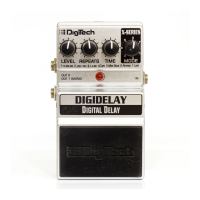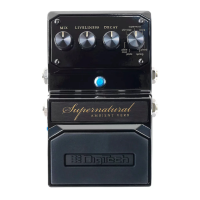40
ms of delay to the detuner's voices that are panned hard to one side (while not delaying the other side) will change
the detuner's stereo imaging greatly.
DETUNER P
ARAMETERS
FX: Lvl Controls the signal input level fed to the Module. Ranges from Off to 100%.
Dry: Lvl Controls the level of the dry (uneffected) signal. Ranges from Off to 100%.
Balance Controls the positioning of the dry signal in the stereo soundfield. Ranges from -99 (all left)
to 99 (all right).
Dtn A - B Controls the detuning amount for detuner voices A and B. Higher detune settings produce a
more dissonant sound. Ranges from -50% to 50%.
Dtn C - D Controls the detuning amount for detuner voices C and D. Ranges from -50% to 50%.
Dtn E -H Controls the detuning amount for detuner voices E through H. Ranges from -50% to 50%.
Dly A - B Controls the amount of time before detuner voices A and B are heard. Higher delay time set-
tings produce a short slapback delay effect. Ranges from 0 to 60 milliseconds.
Dly C - D Controls the amount of time before detuner voices C and D are heard. Ranges from 0 to 60
milliseconds.
Dly E - H Controls the amount of time before detuner voices E through H are heard. Ranges from 0 to
60 milliseconds.
Out A - B Adjusts the overall level of detuner voice A or B. Ranges from Off to 100%.
Pan A - B Controls the stereo soundfield placement of detuner voice A or B. Ranges from -99 (all left)
to 99 (all right).
Out C - D Adjusts the overall level of detuner voice C or D. Ranges from Off to 100%.
Pan C - D Controls the stereo soundfield placement of detuner voice C or D. Ranges from -99 (all left)
to 99 (all right).
Out LA - LB Adjusts the left side level of detuner voice A or B. Ranges from Off to 100%.
Out RA - RB Adjusts the right side level of detuner voice A or B. Ranges from Off to 100%.
Spread Controls the width of the effect’s stereo imaging.The higher the setting, the wider the image.
The lower the setting, the more monophonic the effect becomes. Ranges from 1 to 10.
DELAYS
A delay produces discrete, repeating echoes of the source material at a specified interval. In digital delays, the input sig-
nal is "sampled" or recorded into memory, where it is held for the amount of time you specify with the delay time set-
ting, after which the sample is replayed at the output.The 2112 delays have a feedback meter that is used to send a por-
tion of the delayed signal back to the input to be re-recorded along with new source material.The feedback setting
determines how long the delay repeats take to decay to inaudibility.
WHEN DO I USE DELAY? When your the Lone Guitarist in a band, the Delay can be your best friend.The
Delay repeats can create the illusion that there is more than one guitar being played. One trick to using delays
effectively is setting the delays to fall in time with the music.This used to mean grabbing a calculator, dividing 60 by
the tempo (beats per minute), then dividing that answer by the desired sub-beats ...Sound like a hassle? Yeah, we
thought so too. So the 2112 takes care of all the calculations for you!
Suppose you want the delay to decay as triplets in your music. Simply go to any program and select the delay mod-
ule using the <Edit> button.Turn the <Page> button (you should now see the delay time parameter displayed on
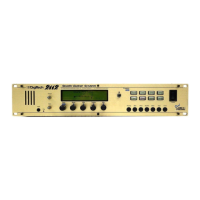
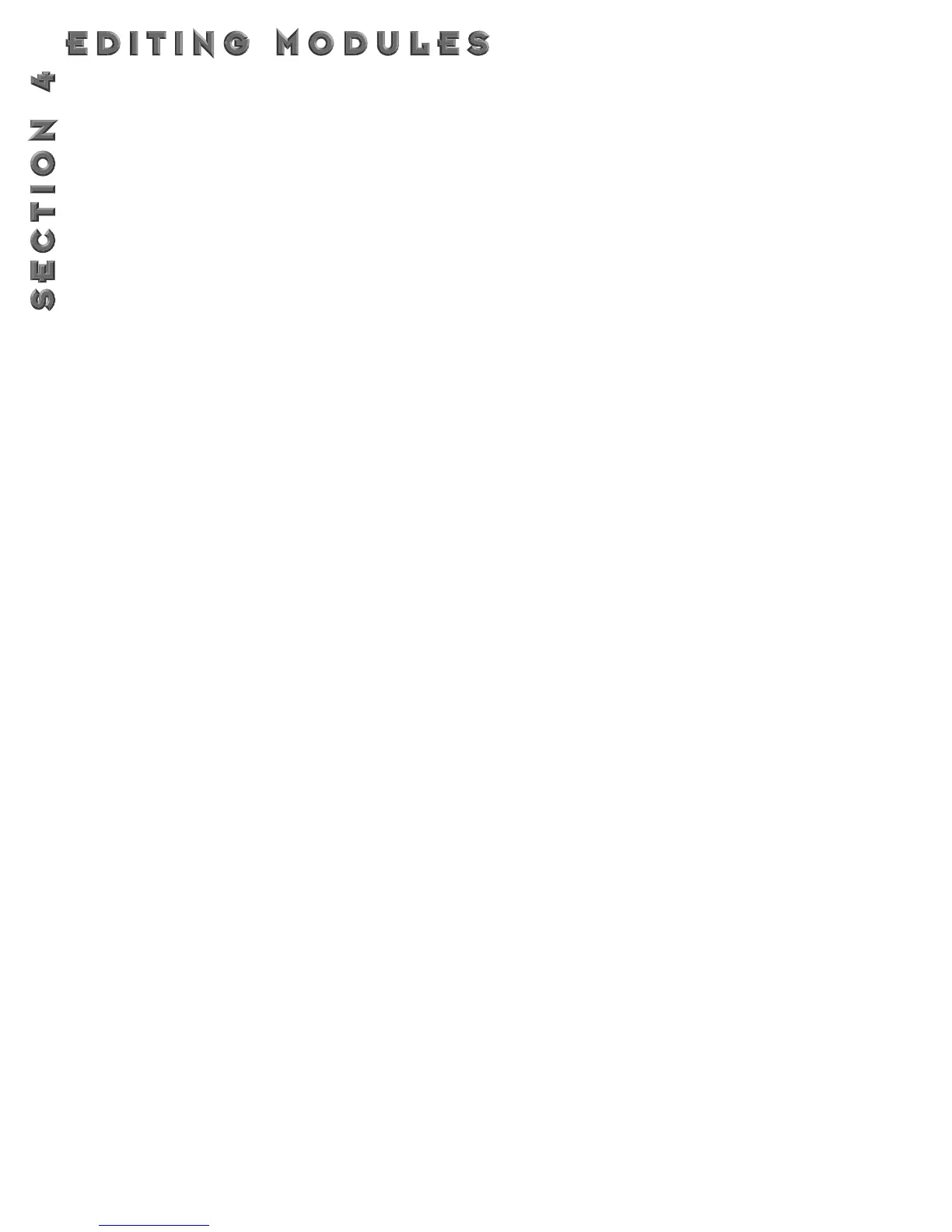